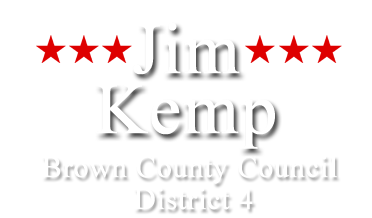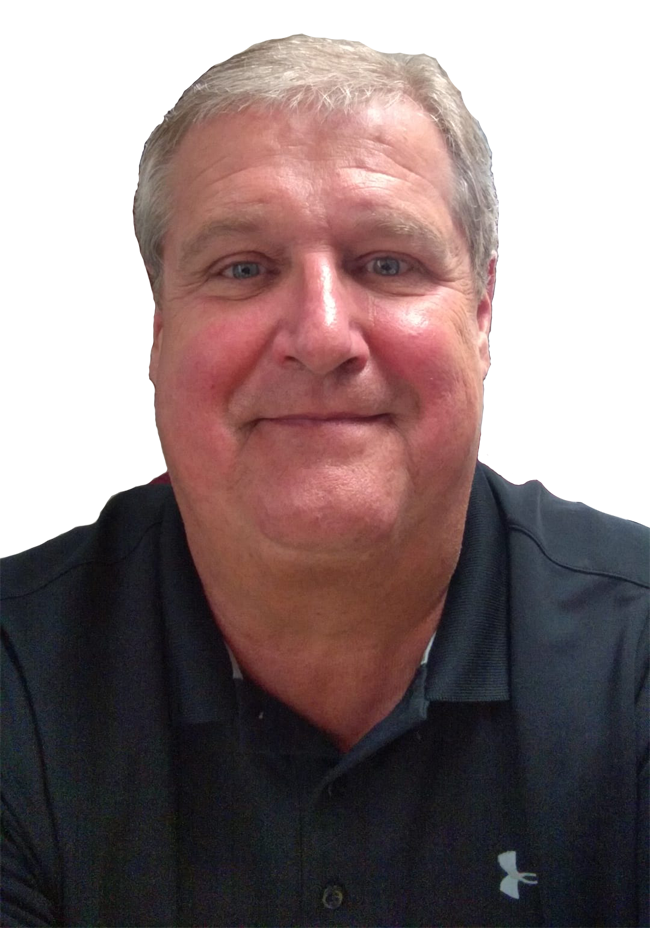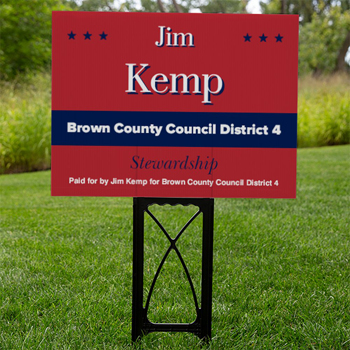
Together, We Will
Move Brown County
Forward!
![]() Let’s be good stewards by asking the right questions and making decisions that are in alignment with what we value to protect the quality of life for those in the future.
Let’s be good stewards by asking the right questions and making decisions that are in alignment with what we value to protect the quality of life for those in the future.
![]() Let’s shift our focus from a near term, reactive one, to a long term, proactive approach to managing the cost of county government.
Let’s shift our focus from a near term, reactive one, to a long term, proactive approach to managing the cost of county government.
![]() Let’s have the courage to be willing to simply say “that would be great, but we can’t afford it.”
Let’s have the courage to be willing to simply say “that would be great, but we can’t afford it.”

Let’s work together to preserve, protect, and promote our quality of life in Brown County.
Why I am running for Brown County Council District 4
 Have you ever heard of the ole adage “as you get older time goes by faster”? I remember hearing that claim as an adolescent and thinking that time doesn’t speed up, it’s a constant. It wasn’t until I attended my thirtieth high school reunion that I begin to appreciate why that statement is true. Today, I realize and appreciate how quickly time passes and the reality that in 28 years, my daughter will be the age that I am today. The quality of life in Brown County in the year 2050 will be dependent on the questions we ask and the decisions county government makes today.
Have you ever heard of the ole adage “as you get older time goes by faster”? I remember hearing that claim as an adolescent and thinking that time doesn’t speed up, it’s a constant. It wasn’t until I attended my thirtieth high school reunion that I begin to appreciate why that statement is true. Today, I realize and appreciate how quickly time passes and the reality that in 28 years, my daughter will be the age that I am today. The quality of life in Brown County in the year 2050 will be dependent on the questions we ask and the decisions county government makes today.
I thought it would be beneficial for those of you who call Brown County home to learn more about who I am, where I came from, and why I made the decision to place my name on the ballot for this year’s election for Brown County Council District 4. First off, let me say this I am not a politician! I am self-employed, and I have been managing small businesses my entire working career. Over the last twenty-four years, I have been actively engaged as a fiduciary providing financial planning services to those who want to take a proactive approach to their life and money. I am a life-long resident of the great state of Indiana. My Amish ancestry dates back five generations to Daviess County, Indiana. My grandfather in the early twentieth century moved north 200 miles to Newton County, Indiana to begin work at the age of 16 in the small Amish-Mennonite farming community.
I have to chuckle when I get asked the question of where I am from or asked to choose a password with a question of what street I grew up on. My answer is always the same – give me a month and year and I will tell you what county I was living in at that time. Because during the first twenty years of my life, I was required to move in and out of the following eight northern Indiana counties: Newton, Porter, Miami, Jasper, Fulton, White, Carrol, and Tippecanoe. Why did I live in so many counties? It begins and ends with my parents who were raised on working farms in Christian households in the small community of Mount Ayr, Indiana.
The first quarter of my life began as a traditional nuclear family – my father was an Indiana State Trooper and my mother was a stay-at-home wife and mother. However, in a matter of a few years their relationship began to erode due to the culture changes of the sixties, financial and emotional uncertainty, domestic violence, and prescription substance abuse. They eventually separated, reconnected, divorced, and remarried each other for a second time. However, a month before my 13th birthday, my father committed suicide and our lives were changed forever. During my K thru 12 years of education, I had transferred in and out of seven different schools nine times, and I had lived in a single parent household, blended family, and with my maternal grandparents. Then in March of 1980, my second stepfather shot and killed my forty-year-old mother.
I have often romanticized with the idea of how life would have been different if I would have had the opportunity of growing up in a secure traditional nuclear family, surrounded by grandparents, aunts, uncles, nieces, nephews, cousins, along with life-long childhood friends. You know – a traditional small Indiana county where everyone knows everyone, and at times they may argue like cats and dogs, but in the end, they always have each-others back. But now, I wouldn’t change a thing because without those experiences, I wouldn’t have the perspective that has led me to where I am today.
In 1986, my wife and I moved to Hope, Indiana where we lived on Schaefer Lake for over twenty years before moving to Brown County in 2008. Why did we move to Brown County? Because if you’re going to live in the State of Indiana, it just doesn’t get any better than Brown County. This year marks the 38th year that Christy and I have been married. We have one daughter Megan who is married, lives in Columbus and works for Toyota. We live on a small 15-acre horse farm with two dogs (Rollie and Ricky Bobbie) and six horses (Lucky, Marty Jo, Sophie, Rowdy, Brisby, and Poppy). It’s been a big adjustment for me over the last fourteen years living back on the farm again, but it’s worth it. I wouldn’t trade it for anything, and you might say being “country” is in the blood.
When I ask myself the question – What’s important about Brown County to me? – my first answer is it’s all of the different shades of the “green”. If you look at Indiana using Google Earth, Brown County is the greenest spot on the map of the entire state. Second, is its location of being smack dab in the middle of five counties consisting of over 500,000 people. Need a job or want to buy something? Not a problem. Columbus, Bloomington, Seymour, Martinsville, Franklin, and Greenwood are all within a 45-minute drive. Third, it’s the spaciousness, tranquility, and feeling of simply disconnecting from the rest of the world without the feeling of having to go somewhere to get out of the house. If you live in Brown County and want to go somewhere, you simply walk outside of your house.
Occasionally I will make a trip over to Bloomington and often chuckle to myself, as I drive through the Brown County State Park to avoid Nashville’s traffic, when I think of those driving in stop and go traffic in urban areas where it takes them 30 minutes to drive just a few blocks. What I find interesting is of the 6.8 million people living in Indiana, 60% of them live in 15 counties. Brown County is close to the bottom of the 92 Indiana counties in population with an estimated 8,400 homes providing shelter for 15,000 people. Yes, the government owns over 50% of the real estate in Brown County which limits our growth, but I see that as a positive.
I understand the convenience of living in suburbia in a two-story home, on a 90’ by 90’ lot, with two small cars that squeeze into the garage with a push mower, and a weed eater. It’s a lot cheaper- lower expenses for utilities, gas, insurance, and maintenance, less to take care of, 30 minutes to cut the grass, a few minutes to shuttle the kids back and forth to school events, and lastly the ability to pop out to pick up supper. Living in the “country” cost us more to live – higher expenses for fuel and utilities, higher premiums for homeowner’s insurance, and the additional cost of having to own ATV’s, tractors, implements, and yes, four-wheel drive trucks to haul, tow, and at times to make it through the floods on our back county roads.
In addition, it is widely reported that over 60% of Americans live paycheck to paycheck, and I am going to assume that this also applies to those living in our county. Thus, we have people in our county who struggle every month with trying to make sure they have more money at the end of each month. I recently met with an individual who told me that they get paid every two weeks. Their first paycheck covers their mortgage payment while the other is used to pay for everything else. What happens when this individual’s car breaks down or their furnace goes out or they need medical care with a high deductible health plan?
It’s not likely this person can simply charge it on their credit card and then demand that their neighbor pays the bill. But that is the exactly how government works. If county government doesn’t have enough money, then they will issue municipal bonds and pass the cost along to their neighbors. Currently, Brown County is close to the top of the ladder in the state when it comes to income tax. We are currently at the lower end when it comes to property tax. If we fail to pay attention to how much money is coming in and more importantly how much money is going out every year, we may find ourselves over the next 28 years of being at the top of the ladder when we go to pay our county taxes.
What are the consequences? It simply means there will be a disproportionate number of our community members who will no longer be able to afford the Brown County “Country Lifestyle”. It’s called gentrification! If your intent is to drive out a certain portion of the population and replace it with affluent outside investment capital to facilitate economic growth, then simply start turning up the heat on property taxes. If our county doesn’t shift from our current approach (near term and emotionally reactive) to a proactive, long-term approach, then our county is likely to look completely different 28 years from now. It’s your choice.
Over the last fourteen years, I have volunteered my time to provide support at our local election polls and have also served on two jury trials. But in 2017, a client asked and encouraged me to lend my skills to the county by serving on the Brown County Redevelopment Commission. That next three years was an eye opener to local county government. It began with being asked to help facilitate some of the challenges that the Helmsburg community was struggling with at that time. The Hometown Collaborative Initiative was ramping up. The Maple Leaf Music Center development concept was introduced to the county. The Brown County Regional Sewer District was actively pursuing their passion for waste-water treatment for the Bean Blossom area. The Bill Monroe Park was sold. The Regional Opportunities Initiatives and their Indiana Uplands Regional Housing Study of Brown County was completed. The fifty-thousand-dollar OCRA Grant for the Thomas P. Miller and Associates Brown County Economic Development Plan was completed by the end of 2019.
Over the same period, I had the privilege of meeting with individuals from the school corporation, county government, and the community. I honestly will state that I really like and respect the people who live, work, and reside in Brown County. There are those who I disagree with their perspective. However, I have learned over the years to accept people for who they are without the need to judge, assign blame, or try to fix. Nothing personal. Let’s simply go for win-win or no deal! I am not running for the position of County Council Member District 4 to try to fix the county because the county isn’t currently broken. Do we face some of the same challenges as other small counties in Indiana? Of course we do! Small counties in Indiana all share some of the same challenges of an aging and declining population, aging infrastructure, declining school enrollment, lack of affordable housing, limited economic opportunity, and the ability of attracting a skilled work force.
Twenty-eight years from now in the year 2050, my only daughter, Megan, will be the age that I am today. Will Megan be able to afford to live on the property that we call home today? This is at the core of why I am running for County Council. If elected, I promise my daughter and you, the community members, that I will do everything within my power to educate myself and you on the cost of Brown County Government. If we educate ourselves on the current county government’s financial picture, then we are better positioned to make decisions that will lead us to a sustainable financial future. This will require public meetings for us to decide what we value as a county so that we may ask the right questions and make the decisions that are in alignment with what we value as a community for the long term. Let’s work together, reminding ourselves to be grateful for what we have, while being good stewards of our future together.
Jim Kemp
7705 Becks Grove Road
Freetown, IN 47235
Mobile: 812-375-4174
Office: 812-376-6463
Reach out to me at jimkemp@jimkemp.com
Paid for by Jim Kemp for Brown County Council District 4